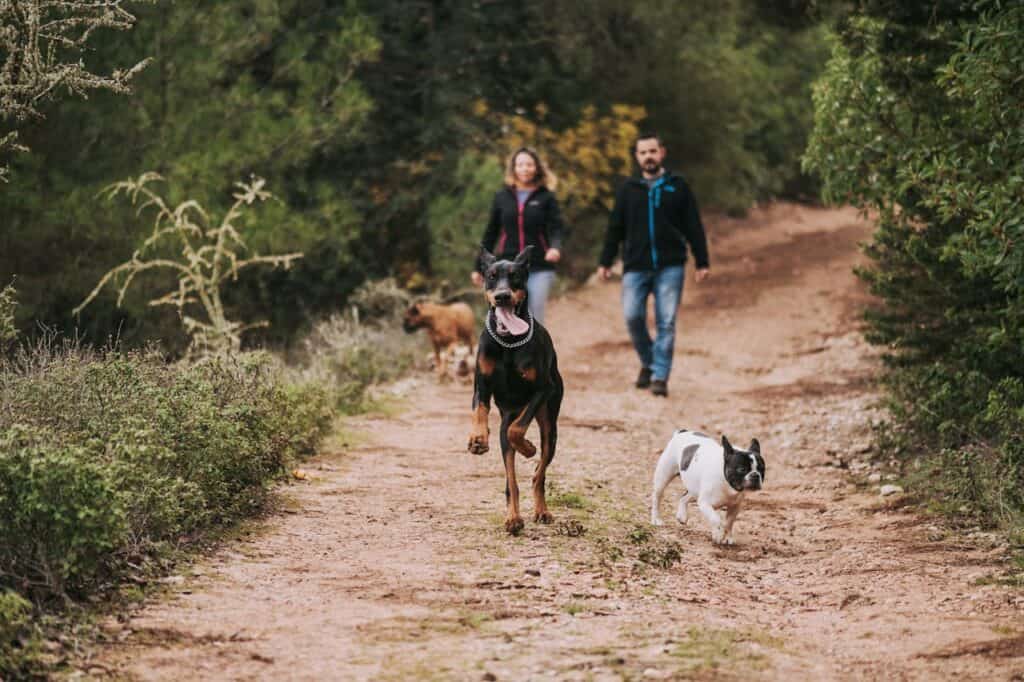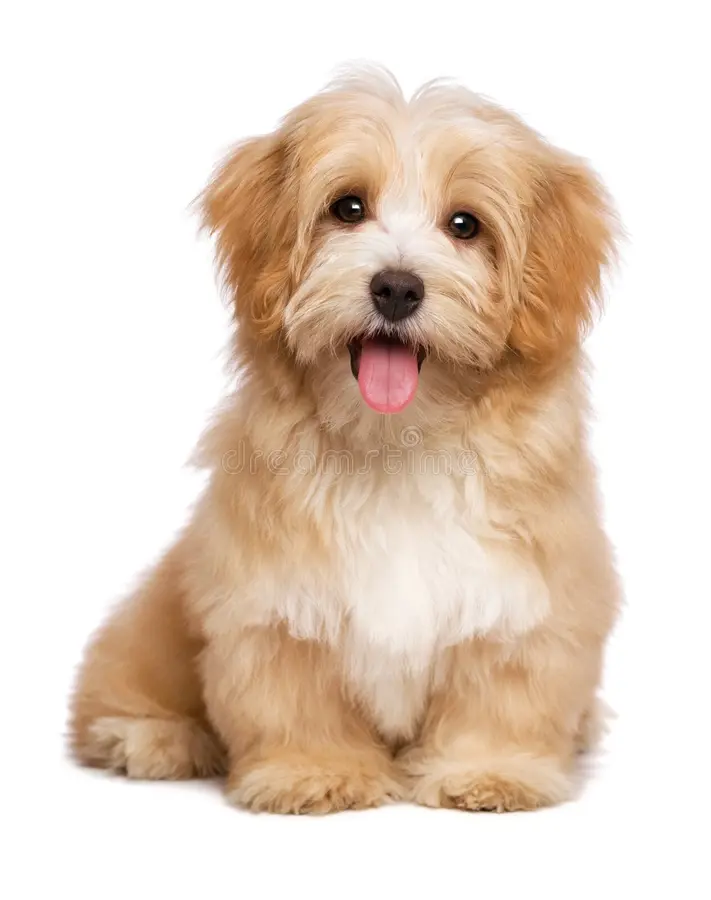1. Introduction
The Doberman Pinscher is a breed that commands attention, whether it’s with their sleek, muscular build or their confident, alert demeanor. Often associated with security and protection, Dobermans are much more than just guard dogs. They are loyal, affectionate, and intelligent companions who excel in various roles, from family pets to working dogs. Their versatility, combined with an innate sense of loyalty, makes them truly man’s best friend.
Key Characteristics and Traits
Dobermans are medium to large-sized dogs, typically weighing between 60-100 pounds (27-45 kg) and standing 24-28 inches (61-71 cm) tall at the shoulder. Their athletic build and graceful, yet powerful movements give them a distinctive presence. They are known for their short, sleek coat that usually comes in black, red, blue, or fawn, often with rust-colored markings on their chest, muzzle, and legs.
One of the most notable traits of the Doberman Pinscher is their intelligence. Ranked among the top five most intelligent dog breeds, Dobermans are quick learners and are highly trainable. They are also known for their unwavering loyalty and protective instincts, making them excellent family guardians. However, despite their reputation for being fierce protectors, Dobermans are incredibly affectionate and gentle with their families, displaying a playful and sometimes even goofy side that can surprise those unfamiliar with the breed.
2. Scientific Insights of the Doberman Pinscher
Cognitive Abilities and Intelligence
Doberman Pinschers are widely recognized for their high intelligence, a characteristic that has been extensively studied and documented in canine research. According to Dr. Stanley Coren’s book, The Intelligence of Dogs, Dobermans rank fifth in obedience and working intelligence, placing them among the most capable breeds in terms of learning and performing tasks. This high level of intelligence is reflected in their ability to learn new commands quickly, often requiring fewer than five repetitions to understand and execute a new task.
Beyond obedience, Dobermans have demonstrated problem-solving skills that make them particularly adept at tasks that require independent thinking. A study published in the Journal of Animal Cognition highlighted the breed’s ability to solve complex puzzles and their capacity for understanding human gestures and emotions. This cognitive prowess is one reason why Dobermans excel in roles that demand quick thinking and adaptability, such as search and rescue operations or competitive obedience sports.
Detection Skills and Olfactory Research
While Dobermans are not typically the first breed that comes to mind when thinking about detection work, their olfactory abilities should not be underestimated. Research conducted by the University of Tokyo found that Doberman Pinschers have a keen sense of smell, which can be harnessed for various detection tasks. In the study, Dobermans were trained to detect specific scents, including narcotics and explosives, with a success rate comparable to more commonly used detection breeds like German Shepherds.
Their strong drive and focus also contribute to their success in detection roles. Unlike some breeds that may become easily distracted, Dobermans maintain their concentration on the task at hand, making them reliable working dogs in high-pressure situations. While they may not be as widely used in detection roles as other breeds, Dobermans have the potential to excel in this field when properly trained.
Behavioral Genetics and Temperament
The temperament of the Doberman Pinscher is a product of both their genetics and their upbringing. Selective breeding has played a significant role in shaping the Doberman’s behavior, particularly their loyalty, protectiveness, and intelligence. Studies on canine behavioral genetics, such as those conducted by the University of Pennsylvania’s School of Veterinary Medicine, have shown that Dobermans possess genetic markers associated with traits like confidence, courage, and a strong bond with their human family.
These genetic traits make Dobermans naturally inclined to protect their families, but they also need proper socialization and training to ensure they develop into well-rounded adults. A well-bred Doberman will typically be confident, alert, and even-tempered, with a strong desire to please their owners. However, without proper training and socialization, they may become overly protective or anxious, highlighting the importance of responsible breeding and ownership.
Role in Medical Therapy and Assistance
In addition to their roles as protectors and working dogs, Dobermans have also shown promise in the field of medical therapy and assistance. Their intelligence, coupled with their deep bond with humans, makes them well-suited for therapy work. A study published in the Journal of Psychiatric Research examined the effects of therapy dogs, including Dobermans, on patients with anxiety disorders. The study found that interactions with Dobermans significantly reduced anxiety levels and improved overall emotional well-being.
Dobermans have also been used as service dogs for individuals with physical disabilities. Their strength and agility allow them to perform tasks such as retrieving objects, opening doors, and providing physical support. While not as commonly used as some other breeds, Dobermans’ trainability and willingness to work make them excellent candidates for assistance roles when matched with the right handler.
3. History and Origin
Origin of the Doberman Pinscher
The Doberman Pinscher’s history is relatively recent compared to many other breeds, with its origins tracing back to the late 19th century in Germany. The breed was developed by Karl Friedrich Louis Dobermann, a tax collector who needed a loyal and protective dog to accompany him on his rounds. Dobermann sought to create a breed that was both courageous and intelligent, capable of protecting him in potentially dangerous situations.
To achieve this, Dobermann is believed to have selectively bred several existing breeds, including the Rottweiler, German Pinscher, Greyhound, and Weimaraner, among others. The result was the Doberman Pinscher, a dog with the strength, speed, and intelligence required for protection work. The breed quickly gained popularity in Germany and beyond, particularly among police and military forces who recognized the Doberman’s exceptional abilities.
Historical Roles and Significance
The Doberman Pinscher’s role as a protector and working dog was solidified during World War I, when they were used by the German military for various tasks, including guarding, message delivery, and detecting mines. Their performance in these roles demonstrated their versatility and solidified their reputation as reliable working dogs. During World War II, Dobermans were also used by the United States Marine Corps, earning the nickname “Devil Dogs” for their fierce loyalty and bravery in battle.
After the wars, the breed’s popularity continued to grow, particularly in the United States, where they became a favorite for police work, personal protection, and as family companions. Today, Dobermans are still used in various working roles, but they have also become cherished family pets known for their loyalty, intelligence, and affectionate nature.

4. Physical Characteristics
Size and Weight of the Doberman Pinscher
Doberman Pinschers are a medium to large-sized breed, with males typically weighing between 75-100 pounds (34-45 kg) and standing 26-28 inches (66-71 cm) tall at the shoulder. Females are slightly smaller, weighing 60-90 pounds (27-41 kg) and standing 24-26 inches (61-66 cm) tall. Their sleek, muscular build is both powerful and elegant, allowing them to move with grace and agility.
Coat Type and Color
The Doberman Pinscher’s coat is one of its most distinctive features. They have a short, smooth coat that lies close to the body, giving them a sleek and polished appearance. The coat is easy to maintain, requiring minimal grooming, but it offers little protection against cold weather, so Dobermans may need extra warmth in colder climates.
Dobermans typically come in four recognized colors: black, red, blue, and fawn, with rust-colored markings on their face, chest, and legs. The black and rust color combination is the most common, but all colors are equally striking. The Doberman’s coat color, combined with their athletic build and alert expression, gives them a commanding presence that is hard to ignore.
Distinctive Features
In addition to their coat, Dobermans have several other distinctive features that set them apart from other breeds. Their ears are often cropped to stand erect, though this practice is becoming less common in some countries. When left natural, a Doberman’s ears are medium-sized and fold over. Their tail is typically docked, giving them a short, compact appearance, though, like ear cropping, tail docking is also becoming less common in some areas.
Dobermans have a long, wedge-shaped head with a strong jaw and a pronounced stop (the point where the forehead meets the muzzle). Their eyes are almond-shaped and dark, exuding intelligence and alertness. The breed’s overall appearance is one of elegance and power, with every feature contributing to their reputation as both guardians and companions.
Speed and Agility
Doberman Pinschers are known for their speed and agility, traits that make them excellent working dogs and competitors in various canine sports. They can reach speeds of up to 32 miles per hour (51 km per hour), making them one of the faster dog breeds. This speed, combined with their agility, allows them to excel in roles that require quick reflexes and precise movements, such as search and rescue or agility competitions.
Their agility is not just limited to speed; Dobermans are also known for their ability to navigate obstacles with ease. This makes them valuable in police work, where they may need to chase down suspects or navigate challenging terrain. In agility competitions, Dobermans are often seen gracefully leaping over hurdles, weaving through poles, and sprinting through tunnels with impressive
speed and accuracy.
5. Types of Doberman Pinschers
American vs. European Dobermans
Doberman Pinschers can be broadly categorized into two types: American and European. The American Doberman is typically bred with a focus on appearance and temperament, making them more suited for the show ring and as family pets. American Dobermans tend to have a more refined appearance, with a slightly lighter build and a more elegant, graceful movement. They are known for their affectionate nature and are often described as being more people-oriented than their European counterparts.
The European Doberman, on the other hand, is bred with a stronger emphasis on working ability, including temperament, drive, and physical capabilities. European Dobermans tend to be larger, with a more muscular build and a higher energy level. They are often used in police and military work due to their strong protective instincts and physical prowess. While still affectionate with their families, European Dobermans are known for their intense focus and determination, making them excellent working dogs.
Working Line vs. Show Line
Within the breed, there are also distinctions between working line and show line Dobermans. Working line Dobermans are bred primarily for their abilities as working dogs, with a focus on traits like intelligence, drive, and physical endurance. These dogs are often used in roles that require high levels of training and physical stamina, such as protection work, search and rescue, and competitive obedience.
Show line Dobermans, on the other hand, are bred with a focus on appearance and conformation to breed standards. While they still retain the intelligence and trainability of the breed, show line Dobermans are more commonly found in the show ring or as companion animals. They tend to have a slightly more refined appearance, with a focus on elegance and grace in their movements.
Both types have their strengths, and the choice between a working line and show line Doberman will depend on the owner’s needs and preferences. Those looking for a family pet may prefer a show line Doberman, while those interested in working or competitive sports may opt for a working line Doberman.
6. Temperament and Personality
General Behavior and Traits of the Doberman Pinscher
The Doberman Pinscher is known for its loyal and protective nature, traits that have been carefully cultivated through selective breeding. They are incredibly devoted to their families and will go to great lengths to protect them from perceived threats. This loyalty, combined with their intelligence, makes them excellent guard dogs and protectors.
Despite their reputation as fierce protectors, Dobermans are also known for their affectionate and gentle nature with their families. They are highly social dogs that thrive on companionship and interaction with their human family members. Dobermans are known for forming strong bonds with their owners and are often described as being “velcro dogs” because they love to be close to their people.
Dobermans are also highly intelligent and trainable, making them excellent candidates for various roles, from family pets to working dogs. They are quick learners and respond well to positive reinforcement training methods. However, their intelligence also means they can become bored easily, so they need plenty of mental stimulation and exercise to keep them happy and well-behaved.
Interaction with Family, Children, and Other Pets
Doberman Pinschers are known for their strong bonds with their families, including children. They are protective yet gentle, making them excellent family pets when properly trained and socialized. However, due to their size and strength, it is essential to supervise interactions between Dobermans and small children to ensure safety. Dobermans are generally patient and tolerant with children, but they may become protective if they sense that their family is threatened.
When it comes to other pets, Dobermans can get along well with other dogs and even cats, provided they are introduced properly and socialized from a young age. However, their strong prey drive means they may be inclined to chase smaller animals, so early socialization and training are crucial to ensure harmonious relationships with other pets in the household.
Dobermans are also known for their loyalty and devotion to their owners. They thrive on companionship and can become anxious or depressed if left alone for extended periods. This makes them best suited for families or individuals who can spend a lot of time with them and include them in daily activities.
Socialization Needs
Socialization is critical for Doberman Pinschers, as it helps them develop into well-rounded and confident adults. Exposing them to various people, environments, and other animals from a young age will ensure they grow up to be adaptable and well-behaved dogs. Dobermans that are not properly socialized may become overly protective or anxious, leading to behavioral issues.
Socialization should be a continuous process throughout the dog’s life, with regular exposure to new experiences. This will help them remain confident and composed in various situations, whether at home, in public, or in new environments. Proper socialization also helps prevent aggression and ensures that Dobermans can interact appropriately with people and other animals.
7. Health and Common Diseases
Typical Lifespan of the Doberman Pinscher
Doberman Pinschers have a typical lifespan of 10-13 years, which is relatively average for a breed of their size. However, their lifespan can be influenced by factors such as genetics, diet, exercise, and access to regular veterinary care. With proper care and attention, many Dobermans can live healthy, fulfilling lives well into their teens.
Common Health Issues and Genetic Conditions
Like all breeds, Doberman Pinschers are prone to specific health issues, some of which are hereditary. One of the most common genetic conditions affecting Dobermans is dilated cardiomyopathy (DCM), a serious heart condition that causes the heart to enlarge and function improperly. DCM is prevalent in the breed, and affected dogs may develop symptoms such as lethargy, coughing, and difficulty breathing. Regular cardiac screenings are essential for early detection and management of this condition.
Another common issue is hip dysplasia, a malformation of the hip joint that can lead to arthritis and mobility issues. This condition can be managed with proper care, but it is crucial to obtain a Doberman from a reputable breeder who tests for hip dysplasia in their breeding stock.
Dobermans are also prone to von Willebrand’s disease, a genetic bleeding disorder that affects the blood’s ability to clot properly. Dogs with this condition may experience excessive bleeding from minor injuries or surgeries. Genetic testing can identify carriers of the disease, helping breeders avoid producing affected puppies.
Regular veterinary check-ups, a balanced diet, and proper exercise can help manage and prevent some of these health issues. Responsible breeding practices and early detection of genetic conditions are also crucial in ensuring the long-term health and well-being of Doberman Pinschers.
8. Care and Grooming
Grooming Needs of the Doberman Pinscher
Doberman Pinschers have relatively low grooming needs due to their short, sleek coat. They shed year-round, but regular brushing, ideally once or twice a week, can help manage shedding and keep their coat looking shiny and healthy. A rubber grooming mitt or a soft bristle brush is usually sufficient to remove loose hair and distribute natural oils across the coat.
Bathing should be done as needed, typically every few months, unless the dog gets particularly dirty. Over-bathing can strip the coat of its natural oils, leading to dry skin. Regular ear cleaning, teeth brushing, and nail trimming are also essential parts of a Doberman’s grooming routine. Because of their short coat, Dobermans are prone to skin conditions, so it’s important to monitor their skin for any signs of irritation or infection.
Dobermans’ nails should be trimmed regularly to prevent them from becoming too long, which can cause discomfort or even lead to injury. If you’re not comfortable trimming your dog’s nails yourself, a professional groomer or veterinarian can do it for you. Regular teeth brushing is also important for maintaining good oral health and preventing dental issues.
Exercise Requirements
Doberman Pinschers are an active breed that requires regular exercise to maintain their physical and mental health. They need at least 1-2 hours of exercise daily, which can include walks, playtime, and mental stimulation activities. Due to their intelligence, they also thrive on tasks that challenge their minds, such as obedience training, agility courses, or puzzle toys.
Exercise is not just about physical activity; it also helps prevent boredom, which can lead to destructive behaviors. Dobermans that do not receive enough exercise may become anxious, frustrated, or develop behavioral problems. Providing them with adequate physical and mental stimulation is essential for a happy and well-balanced dog.
In addition to daily walks, Dobermans enjoy activities that allow them to use their natural abilities, such as running, hiking, or playing fetch. They are also excellent candidates for canine sports like agility, obedience, and protection work. These activities provide both physical exercise and mental stimulation, helping to keep your Doberman healthy and happy.
9. Hypoallergenic Status
Doberman Pinschers are not considered hypoallergenic. Their short coat does shed, which can trigger allergies in sensitive individuals. The dander (dead skin cells) they produce is a common allergen. While regular grooming can help manage shedding and reduce dander, it will not eliminate allergens entirely.
If you or a family member suffers from dog allergies, it is essential to spend time around Dobermans before bringing one into your home to ensure that the breed does not cause significant allergic reactions.

10. Nutrition Requirements
Dietary Needs of the Doberman Pinscher
The dietary needs of a Doberman Pinscher will vary based on their age, activity level, and health. Generally, they require a high-quality, balanced diet that provides all the essential nutrients. Protein is particularly important for this breed, given their muscular build and high energy levels. Look for dog food that lists meat as the first ingredient and avoid foods with excessive fillers.
For puppies, a diet formulated for large-breed puppies is recommended, as it helps support their rapid growth
without causing joint issues. Adult Dobermans should be fed a diet that maintains their weight and meets their energy needs, while senior Dobermans may benefit from a diet that supports joint health and mobility.
Recommended Food and Supplements
In addition to high-quality dog food, some Dobermans may benefit from supplements. Glucosamine and chondroitin are commonly recommended for joint health, particularly in breeds prone to hip dysplasia. Omega-3 fatty acids, found in fish oil, can help maintain a healthy coat and skin, as well as support cognitive function.
Always consult with a veterinarian before introducing supplements to ensure they are appropriate for your dog’s specific needs. Fresh water should always be available, and treats should be given in moderation to prevent obesity.
It’s also important to monitor your Doberman’s weight and adjust their diet as needed to prevent obesity, which can exacerbate health issues like hip dysplasia and heart disease. Regular check-ups with your veterinarian can help ensure that your dog is getting the right nutrition for their age and activity level.
11. Training and Obedience
Trainability of the Doberman Pinscher
Doberman Pinschers are highly trainable due to their intelligence and eagerness to please. They excel in obedience training and can learn complex commands and tasks with relative ease. Early training is essential to ensure they develop into well-mannered adults, and their training should be consistent and positive.
Positive reinforcement techniques, such as using treats, praise, and play, are particularly effective with Dobermans. They respond well to clear and consistent commands and thrive in an environment where they are mentally stimulated and challenged. However, it’s important to establish yourself as a confident and consistent leader, as Dobermans can be strong-willed and may try to assert dominance if they sense a lack of leadership.
Common Training Techniques
Training should begin with basic commands such as sit, stay, come, and heel. Once these are mastered, more advanced training can be introduced, including agility, tracking, or protection work, depending on the dog’s role. Dobermans also benefit from socialization training, where they learn to interact with various people, animals, and environments.
Crate training is often recommended for Dobermans, as it provides them with a safe space and can help with housebreaking. Leash training is also important, as Dobermans are strong dogs that need to be taught to walk calmly on a leash. Teaching your Doberman to walk on a loose leash from a young age can prevent pulling and other leash-related issues.
Tips for Successful Training
Consistency is key when training a Doberman Pinscher. Training sessions should be short but frequent, keeping the dog engaged and preventing boredom. Patience and positive reinforcement will yield the best results, as harsh methods can lead to fear or anxiety in the dog.
It’s also important to make training a part of daily life. Incorporate commands into regular activities, such as having the dog sit before meals or stay before going for a walk. This helps reinforce training and ensures the dog remains obedient in various situations.
12. Work and Activities
Activities or Jobs That the Doberman Pinscher Excels In
Doberman Pinschers are incredibly versatile and excel in a wide range of activities and jobs. They are commonly used in police and military work, where their intelligence, strength, and loyalty make them ideal for tasks such as tracking, apprehension, and detection. Their keen sense of smell also makes them valuable in search and rescue missions, where they can locate missing persons in challenging environments.
In addition to professional work, Dobermans excel in various dog sports, such as agility, obedience, and herding trials. These activities provide both physical exercise and mental stimulation, helping to keep the dog healthy and happy. Their agility and speed make them particularly well-suited for sports like agility and obedience, where they can showcase their impressive physical and mental abilities.
Examples of Competitive Sports, Therapy Work, and Search and Rescue
Doberman Pinschers are frequent competitors in agility trials, where their speed and agility are on full display. They navigate obstacle courses with precision and speed, showcasing their physical prowess and trainability. In obedience trials, Dobermans demonstrate their ability to follow complex commands with accuracy, earning high marks for their performance.
In therapy work, Dobermans provide comfort and support to individuals in hospitals, nursing homes, and rehabilitation centers. Their calm demeanor and strong bond with humans make them effective therapy dogs, helping to improve the emotional well-being of those they visit.
In search and rescue, Dobermans are trained to locate missing persons in a variety of environments, from urban areas to wilderness. Their speed, agility, and keen sense of smell make them invaluable in these missions, often saving lives in the process.
13. Behavioral Issues
Common Behavioral Issues
While Doberman Pinschers are generally well-behaved and obedient, they can develop behavioral issues if not properly trained or socialized. One common issue is separation anxiety, which can occur if the dog becomes too attached to their owner and is left alone for extended periods. This can lead to destructive behaviors, such as chewing or excessive barking.
Another issue is aggression, which can manifest if the dog is not properly socialized or feels threatened. Dobermans are protective by nature, and if not trained to discern between real and perceived threats, they may become overly aggressive towards strangers or other animals.
Managing and Correcting Behavioral Problems
Addressing behavioral issues in Dobermans requires patience and consistency. For separation anxiety, providing the dog with mental stimulation, such as puzzle toys or interactive games, can help alleviate boredom and anxiety. Gradual desensitization to being alone, combined with positive reinforcement, can also help reduce anxiety.
Aggression can be managed through proper socialization and training. Introducing the dog to various people, animals, and environments from a young age will help them learn to interact appropriately. If aggression becomes a significant issue, working with a professional dog trainer or behaviorist may be necessary to correct the behavior.
Regular exercise and mental stimulation are also crucial in preventing and managing behavioral issues. A well-exercised and mentally challenged Doberman is less likely to develop negative behaviors. Ensuring that your Doberman receives plenty of exercise, training, and attention can help prevent behavioral problems and ensure a happy, well-adjusted dog.
14. Ideal Owners and Families
Type of Owners Best Suited for the Doberman Pinscher
Doberman Pinschers are best suited for owners who lead active lifestyles and have the time and energy to dedicate to their dog’s training and exercise needs. They require a strong, confident owner who can provide consistent leadership and guidance. First-time dog owners may find the breed challenging due to their intelligence and energy levels, so experience with dogs is often beneficial.
Dobermans thrive in homes where they can be an integral part of the family. They are loyal and affectionate dogs that form strong bonds with their owners, making them excellent companions for those who can meet their needs. However, their high energy levels and need for mental stimulation mean they may not be the best choice for everyone.
Compatibility with Families, Singles, Older People, etc.
Dobermans are highly adaptable and can thrive in various living situations, whether with families, singles, or older people. They are particularly well-suited for families with children, as they are protective yet gentle. However, their size and strength mean they may not be the best choice for households with very young children or older individuals unless proper supervision and training are in place.
For singles or older people, Dobermans can be excellent companions, provided they receive adequate exercise and mental stimulation. They are loyal and devoted dogs that form strong bonds with their owners, making them excellent companions for those who can meet their needs.
Dobermans are also known for their loyalty and devotion to their owners. They thrive on companionship and can become anxious or depressed if left alone for extended periods. This makes them best suited for families or individuals who can spend a lot of time with them and include them in daily activities.
Living Conditions
Doberman Pinschers can adapt to various living conditions, from apartments to homes with large yards. However, they require regular exercise and mental stimulation, so access to outdoor space or daily walks is essential. They are not well-suited to being left alone for long periods, as they thrive on companionship and interaction with their owners.
In homes with yards, it is important to have secure fencing, as Dobermans are strong and agile and may try to escape if bored or anxious. They can adapt to indoor living, but regular outdoor activity is crucial to prevent boredom and associated behavioral issues.
15. Adaptability
Adaptability to Different Environments
Doberman Pinschers are highly adaptable dogs that can thrive in various environments, from rural areas to urban settings. Their intelligence and trainability make them capable of adjusting to new situations and environments with relative ease. However, they require regular mental and physical stimulation to prevent boredom and ensure their well-being.
In urban environments, Dobermans may need more structured exercise routines, such as daily walks or visits to dog parks, to ensure they remain physically active. In rural areas, they may have more opportunities for free play and exploration, which can help satisfy their need for exercise and mental engagement.
Dobermans are also known for their loyalty and devotion to their owners. They thrive on companionship and can become anxious or depressed if left alone for extended periods. This makes them best suited for families or individuals who can spend a lot of time with them and include them in daily activities.
Adjustments to Lifestyle Changes
Dobermans can adjust to lifestyle changes, such as moving to a new home or the arrival of a new family member, as long as their basic needs for exercise, mental stimulation, and companionship are met. Introducing changes gradually and maintaining a consistent routine can help ease the transition and prevent stress or anxiety in the dog.
Their adaptability also extends to changes in their role within the family, such as shifting from a working dog to a family companion. With proper training
and socialization, Dobermans can successfully navigate these transitions and continue to thrive in their new roles.

16. Famous Dobermans
Notable Dobermans in History, Movies, or Public Life
Doberman Pinschers have been celebrated in various roles, from working dogs to movie stars. One of the most famous Dobermans in history is Graf Belling von Grönland, the first Doberman to be registered with the American Kennel Club (AKC) in 1908. Graf Belling was known for his exceptional temperament and physical attributes, setting the standard for the breed in the United States.
In popular culture, Dobermans have appeared in numerous films and television shows, often portrayed as fierce protectors or loyal companions. One notable example is the 1972 film The Doberman Gang, which featured a group of highly trained Dobermans carrying out a bank heist. While the film’s portrayal of Dobermans as criminal masterminds was fictional, it showcased the breed’s intelligence and trainability.
Dobermans have also served in various public roles, including as police and military dogs. During World War II, Dobermans were used by the United States Marine Corps as sentry and messenger dogs, earning the nickname “Devil Dogs” for their bravery in battle. Today, Dobermans continue to serve in various capacities, from police work to search and rescue, thanks to their strong work ethic and loyalty.
17. Summary
Summary of Key Points
The Doberman Pinscher is a versatile and loyal breed known for its intelligence, strength, and adaptability. Originating in Germany in the late 19th century, the breed was developed for protection work but quickly gained recognition for its ability to excel in various roles, from police and military work to family companionship. Dobermans are medium to large-sized dogs with a sleek, muscular build and a short, smooth coat that comes in various colors.
Dobermans require regular exercise, mental stimulation, and socialization to thrive. They are highly trainable and excel in various activities, from obedience and agility to search and rescue. While they are prone to certain health issues, such as dilated cardiomyopathy and hip dysplasia, proper care and attention can help them live healthy, fulfilling lives.
Whether as working dogs or beloved family pets, Dobermans have earned their place as one of the most respected and admired dog breeds in the world. Their loyalty, intelligence, and versatility make them a truly exceptional breed.
This article is brought to you by Our World of Dogs. Explore more dog breeds and find out how our dog boarding services can benefit your furry friend!



